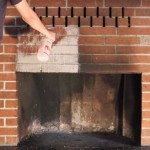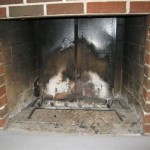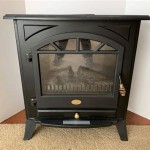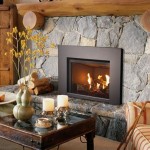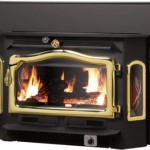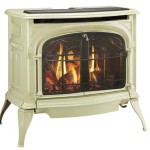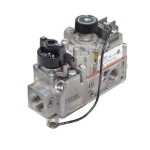Vent-Free Gas Fireplaces: Efficiency, Safety, and Considerations
Vent-free gas fireplaces have gained popularity in recent years due to their convenience, efficiency, and aesthetic appeal. These fireplaces function without traditional chimneys, relying on a sealed combustion system to vent exhaust directly into the room. While offering several advantages, vent-free fireplaces also require careful consideration regarding safety and installation practices. This article will explore the key features, benefits, and potential drawbacks of vent-free gas fireplaces, providing homeowners with valuable information to make informed decisions.
Efficiency and Heat Output
Vent-free gas fireplaces are known for their efficiency, converting a high percentage of fuel energy into heat. This efficiency is achieved through the sealed combustion system, which prevents heat loss through a traditional chimney. The heat generated from the combustion process is directly released into the room, providing a comfortable and efficient heating source. However, the heat output of vent-free fireplaces varies depending on their size and design. It is essential to consider the size of the room and its insulation levels when selecting a vent-free fireplace to ensure adequate heating.
Safety and Regulation
The safety of vent-free gas fireplaces is a paramount concern. While these fireplaces are designed to be safe, proper installation and regular maintenance are crucial. The sealed combustion system prevents dangerous byproducts, such as carbon monoxide, from escaping into the home. However, improper ventilation or malfunctioning equipment can lead to carbon monoxide buildup, posing a serious health risk. To mitigate these risks, vent-free gas fireplaces must meet stringent safety standards set by the National Fire Protection Association (NFPA). It is recommended to choose a model certified by the Gas Appliance Manufacturers Association (GAMA) and to have it installed by a qualified professional.
Installation Considerations
Installing a vent-free gas fireplace requires careful planning and adherence to specific guidelines. The installation process must comply with local building codes and regulations. Due to the lack of a traditional chimney, the fireplace must be installed in a room with adequate ventilation. This often involves installing a vent or opening to provide fresh air intake and exhaust the combustion byproducts. The installer must also ensure the appropriate clearance between the fireplace and combustible materials, such as walls and furniture. The installation process typically involves connecting the fireplace to a gas line and ensuring proper combustion and venting.
Advantages of Vent-Free Gas Fireplaces
Vent-free gas fireplaces offer several advantages over traditional fireplaces, making them a popular choice for many homeowners. Here are some of the key benefits:
- Efficiency: Vent-free fireplaces are highly efficient, converting most of the fuel energy into heat, resulting in lower energy consumption and cost savings.
- Convenience: They offer easy operation and require minimal maintenance, making them a convenient heating source.
- Aesthetics: Vent-free fireplaces offer a wide range of designs and styles, complementing various interior décor preferences.
- Heating Benefits: These fireplaces can provide supplementary heat for individual rooms or even as a primary heating source in smaller spaces.
Disadvantages of Vent-Free Gas Fireplaces
Despite their benefits, vent-free gas fireplaces also have some drawbacks to consider:
- Limited Size: Due to safety regulations, vent-free fireplaces tend to be smaller than traditional fireplaces, limiting their heat output.
- Ventilation Concerns: Improper installation or ventilation can lead to carbon monoxide buildup, posing a severe health risk.
- Limited Location Options: The need for fresh air intake and proper venting may restrict the location options for installation.
- Moisture Considerations: Vent-free fireplaces can contribute to moisture buildup in the room, which may require additional ventilation or dehumidification.
Conclusion
Vent-free gas fireplaces offer a blend of convenience, efficiency, and aesthetics. However, it is essential to weigh the potential benefits against the safety concerns and installation requirements. Choosing a certified model, ensuring proper installation by a qualified professional, and complying with safety regulations are crucial for maximizing the benefits and minimizing risks associated with these fireplaces.
:max_bytes(150000):strip_icc()/ventless-gas-fireplaces-4160746-hero-f9d4bdcd9bd446eb84406de306f790ba.jpg?strip=all)
How To Pick Out A Ventless Gas Fireplace

One6 Vf SÓlas Contemporary Fireplaces

Ventless Gas Fireplace Vent Free Modern

Empire Vail Premium 32 Slope Glaze Burner Vent Free Gas Fireplace Vf

What Is A Vent Free Fireplace

Superior 43 Vrl4543 Linear Vent Free Gas Fireplace

Superior Fireplaces 42 Vent Free Firebox Fine S Gas

Vent Free Gas Fireplaces Inserts Stoves Napolis Godby Hearth And Home

Empire Boulevard 48 Inch Vent Free Linear Gas Fireplace Bbq Island Grills And Smokers

Artisan 60 Inch Vent Free Linear Fireplace Fine S Gas
Related Posts

